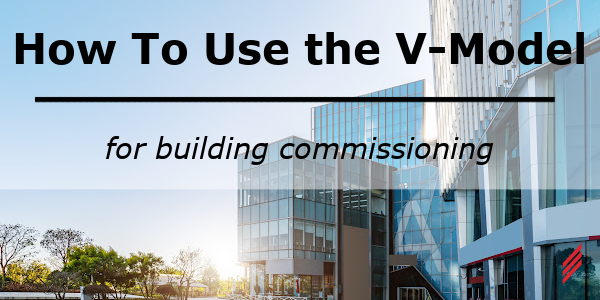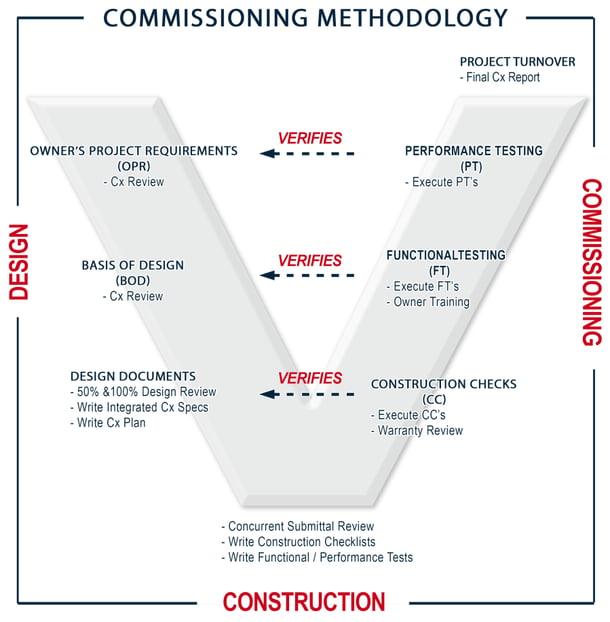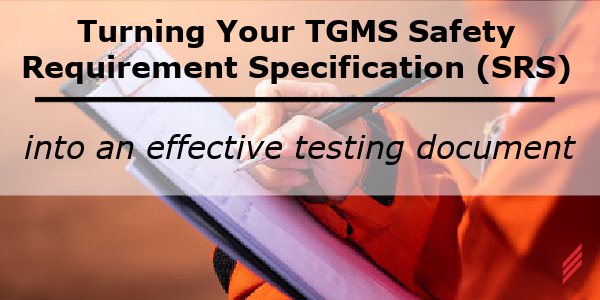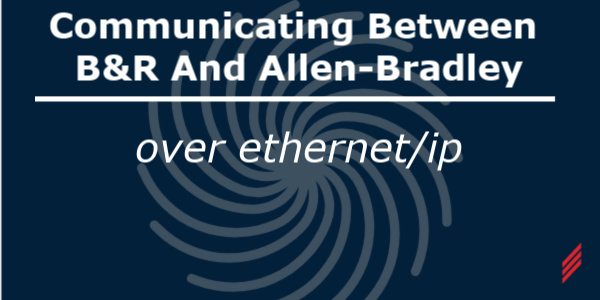How to use the V-Model for Building Commissioning
by Matt Reed on Jun 27, 2024 10:30:00 AM

My first experience with the Commissioning V-Model was 17 years ago while interviewing with Hallam. It was being used as a visual tool to give me a brief overview of the Commissioning Process observed at Hallam. Being new to the field I took note of how effective the V-Model was.
Introduction
This blog entry is a portion of a white paper that I have developed to help with a common question that I have heard from several building Owners, Owner’s Project Managers, and building occupants throughout the years:
“If my building was commissioned, then why am I still getting complaints from building occupants?”
I was transitioning from being a nuclear trained Machinist Mate in the US NAVY working as a Quality Assurance Inspector on a submarine, and although the Commissioning/Validation Engineer position that I was being considered for had many similarities, there was still a lot to learn.
Progressing forward in my career the V-Model was an effective tool to keep sight of the big picture when focusing so closely on the finer details of each required task. We use this tool as a method of visualizing the Commissioning Process and giving a rough timeline of when tasks are performed as well as the general purpose for each task. It also details how each task relates to the others to accomplish the overall commissioning goal. I feel this could be useful to project Owners as well, and so this white paper was born.
I have worked on many projects, both large and small, throughout the northeast. When it comes to both new construction and renovations, large teams are implemented to deliver the project to the Owner. Architects and Engineers design the space and building systems. Construction Managers and Sub-Contractors construct the space and systems as specified in the design documents. The Commissioning Authority implements and documents the Commissioning Process. Of all the projects that I have been involved in, for the most part all team members were trying to complete the project on time, under budget, and to the best of their ability. So, if an Owner hires only competent professionals to design, construct, and test their new building or space, what else can be done to reduce the number of complaints by occupants long after the project’s completion? The Commissioning V-Model can be used.
Commissioning Projects
For the purposes of the Commissioning V-Model commissioning projects are separated into the 3 main phases:
- In the Design Phase the project requirements are established. The OPR is written to define the facility’s intended uses and operation, measurable performance criteria, benchmarks, and success criteria. The Basis of Design (BOD) is written to document the calculations, concepts, and determinations along with equipment selections to meet the OPR. The design documents, such as the specifications and construction drawings, are generated in this phase. Other commissioning activities are also performed in this phase such as the development of the Commissioning Plan and the Commissioning Specifications, and the design review is performed by the Commissioning Authority.
- In the Construction Phase the Construction Manager, with their Sub-Contractors, begins erection and, if a renovation, demolition of the facility. The Construction Phase continues until construction is complete.
- The Commissioning Phase begins within the Construction Phase and continues after construction is complete. In the Commissioning Phase both the Pre-functional Checklists and the Functional/Performance Test Scripts are generated and executed. Before those documents can be created the equipment submittals must be reviewed. Also in the Commissioning Phase the training matrix is developed and distributed to track owner training, a warranty review is performed to address any potential warranty issues prior to their expiration, and the systems manual is created for the owners use after turnover for insight into the construction, commissioning, maintenance, and operational information about the equipment and systems. Commissioning documentation executed in the Commissioning Phase is designed to verify adherence to their corresponding design documentation.
Commissioning V-Model
The Commissioning V-Model outlines the tasks performed in the different phases throughout the project. The “V” itself represents the lifecycle of the commissioning project; starting at the top left, moving down through the Design Phase to the bottom where the Construction Phase begins, then back up to the top right through the Commissioning Phase.
In my white paper, I provide more detailed information on how to utilize the V-Model to guide the commissioning process. I also identify the three most common complaints from building occupants and how using the V-Model during commissioning can help to reduce these complaints from occurring.
About the author
Matt is an experienced team leader with Hallam-ICS. He oversees all commissioning and validation projects and is responsible for the management and mentorship and the personnel within the Connecticut region
Read My Hallam Story
About Hallam-ICS
Hallam-ICS is an engineering and automation company that designs MEP systems for facilities and plants, engineers control and automation solutions, and ensures safety and regulatory compliance through arc flash studies, commissioning, and validation. Our offices are located in Massachusetts, Connecticut, New York, Vermont, North Carolina Texas and Florida and our projects take us world-wide.
You May Also Like
These Related Stories

Turning Your TGMS Safety Requirement Specification (SRS) into an Effective Testing Document

The Benefits of Turnkey Engineering Solutions: One Partner from Design to Commissioning



No Comments Yet
Let us know what you think